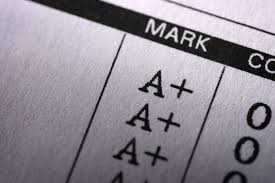The grading system of middle school St. Mary’s International School in Tokyo middle school underwent major changes in 2022. Previously, the middle school of St. Mary’s International School used a letter-based system with A, B, C, D, F, but after the change, they have a standard-based grading system with 1, 2, 3, and 4. Grades are an important factor in schools. These grades can affect lots of things. Maybe some parents may ground their children for getting a bad grade. Some of these grades may affect the student’s career. Changing the grading system can majorly affect students later in life due to a change in difficulty in getting proficient grades, which can drop the students’ grades without them realizing it.
In the world, there are lots of grading systems. For example, percentage-based grading, which changes grades based on percentage and averaging that using math like mean average, letter-based grading that uses the percentage that the student got and grades it with letters through A B C D F, and standards-based grading were the teachers’ chosen standards that the students need to meet to get proficient grades. In 2022, the middle school of St. Mary’s International School changed the grading system to standards-based grading with 1 2 3 4 from letter-based grading with A B C D F.
Ms Colleen Ashmore, middle school principal for St. Mary’s International School, says that “with standards-based grading, we can reflect to students who are over grade level. But in letter-based grading with ABCD, we could not. That was one of the main purposes.” In letter-based or percentage-based grading, the maximum score that students were able to get was 100%, and the teachers were not able to reflect to students who can do harder questions that are over grade level. But in standards-based grading in grade 4 is exemplary or over grade level, the teachers can reflect to these students that they can do better.
Also, one student from the 8th grade of St. Mary’s International School commented, “I think the positive thing is that it’s very simple and easy to understand.” In standard-based grading, there are only four parts, unlike the percentage grading system, where there are 0 to 100. This makes the standards-based grading system look simpler compared to the percentage grading system. Also, in percentage-based grading, there can be some problems between the students and the teachers because the students may be furious about their grade and ask about the difference between 79% and 0%, and why they should not get a B, rather than a C+. On the other hand, standards-based grading uses standards that teachers choose to get a three, which can make the grading system simpler compared to the percentage-based grading system.
Although in standard-based grading, there are pros like being able to get over 100%, and its simplicity, there are some cons too. One student commented, “One of the cons is that the range of 3 is vague.” 3 means proficient, and although it can depend on the school but proficient grades are from B- and over. And this range can be too vague for some people. Because even if the student gets a 3, they do not know if the 3 is a B-range 3 or an A-range 3. Another anonymous 8th grader who answered a survey indicated that the range of the proficient grade was a bit wide or vague and do not understand where he is in A B C D F. Another student said that “ It can be confusing because you can’t associate the ABCDF with the current grading system. For example, Proficient doesn’t mean a B or A, it just means you met the standard. Some parents can be confused.” Standard-based grading and letter-based grading are two different systems and cannot be converted it realy. This may confuse students, parents, and teachers at first because they were used to the letter-based grading system.
“The cons are that it doesn’t prepare them for high school grading and can be vague sometimes,” a student commented. Unlike middle school, high school in St. Mary’s International School uses letter-based grading. And that change in grade from middle school’s standard-based grading to high school’s letter grading can affect the student’s performance. Kent Stein, a 10th grader in St. Mary’s International School who experienced the change in grade in his final middle school year, says, “Lots of students’ grades dropped in high school compared to their previous grades in 7th grade when we had letter-based grading.” Although there are many possible reasons that their grades dropped, like the assignment becoming harder or those students just not studying at all. But one of the reasons can be that the change in the grading system made the students think that they are doing well because of getting 3, while they could have gotten a low grade due to the grade’s vagueness.
The difficulty of change in the grading system does not end after middle school. Two years after the change from middle school to high school, there will be another change in the grading system. The IB grading system would be introduced. IB, International Baccalaureate, a globally recognized educational program. IB is a grading program that has a scale from one to seven for each subject. The program is used mostly in Europe and divides each subject into a higher level, which is harder, and a lower level, which is easier, compared to the higher level. This change may confuse the students more because when they finally got used to the new grading system, it changes again. Although this IB grading system can be similar to the standard-based grading system because both use numbers, IB uses not one to four but one to seven, which can be a bit tricky for the students. These changes can train the students for several grading systems for their future school, but they can also confuse the students.
Although there are downsides to the change from percentage-based or letter-based grading to standard-based grading, it is not possible to reverse it. The important thing to understand is the pros and cons of the system and how the grading system works, and work hard to get the best grade in any grading system.

































